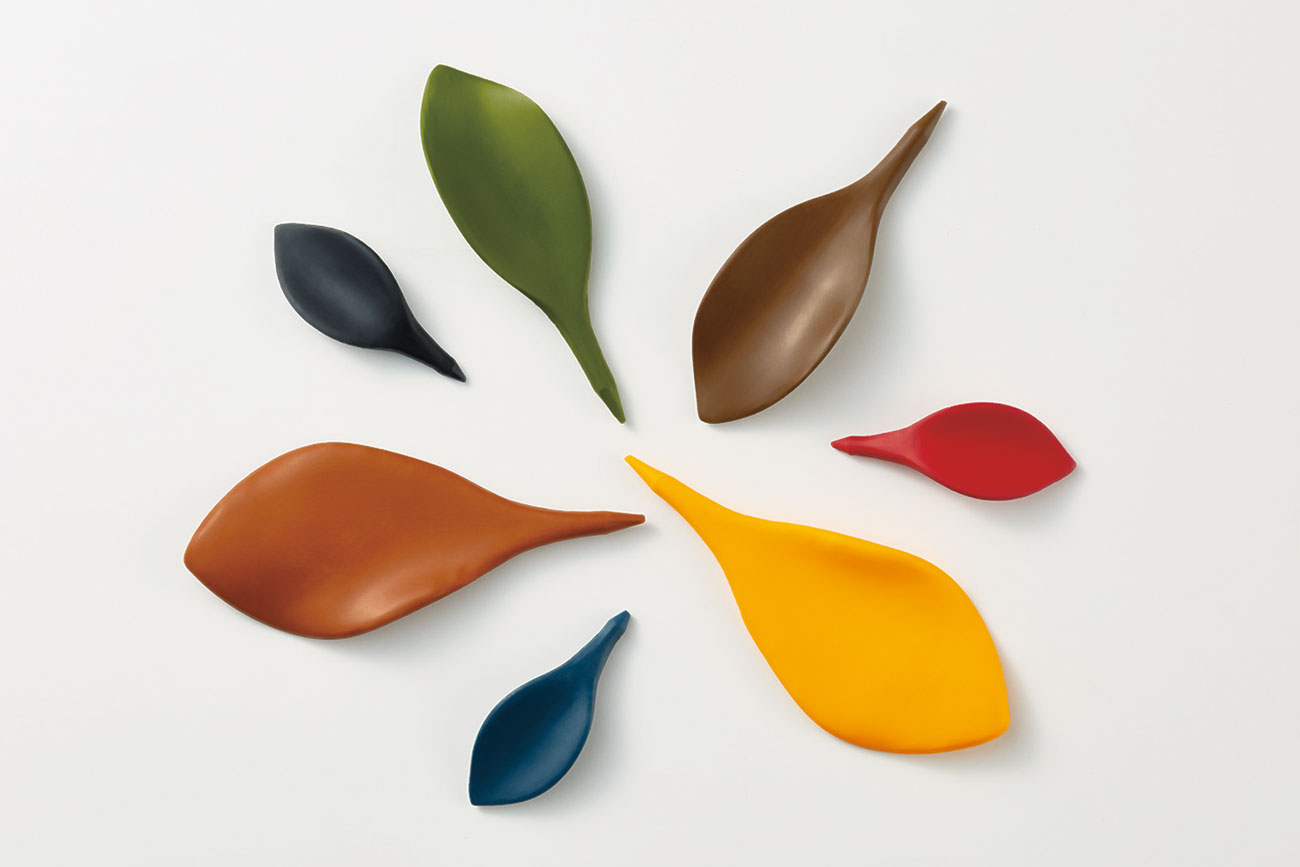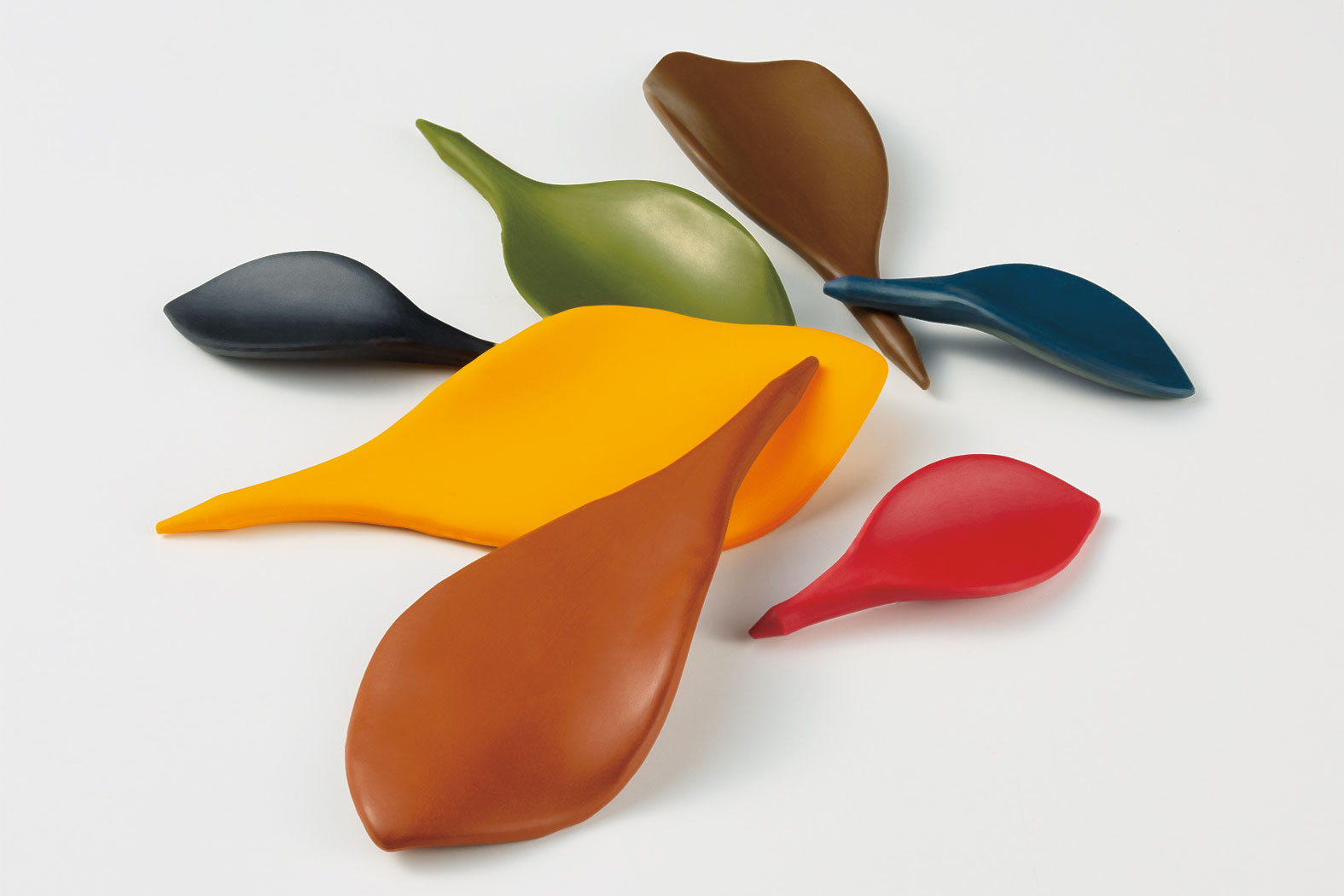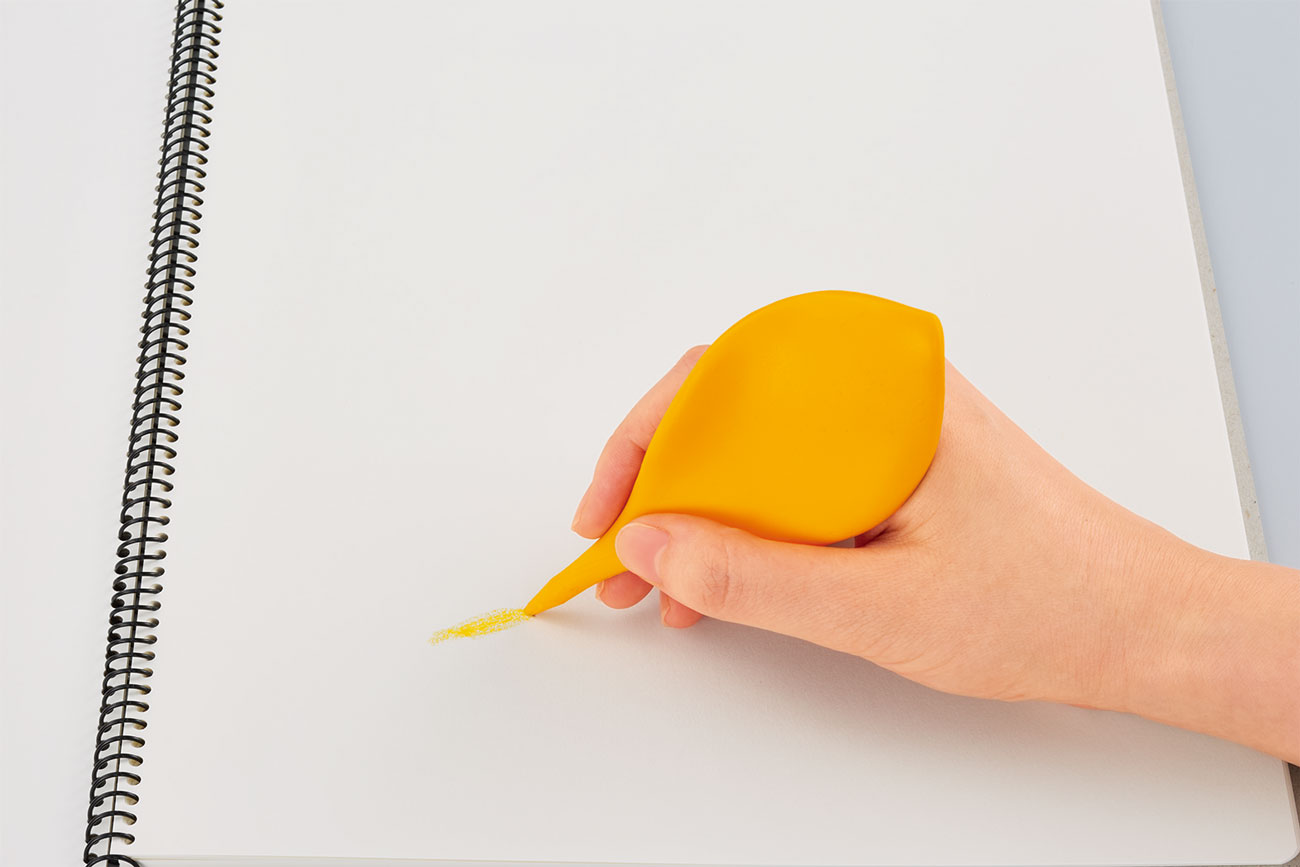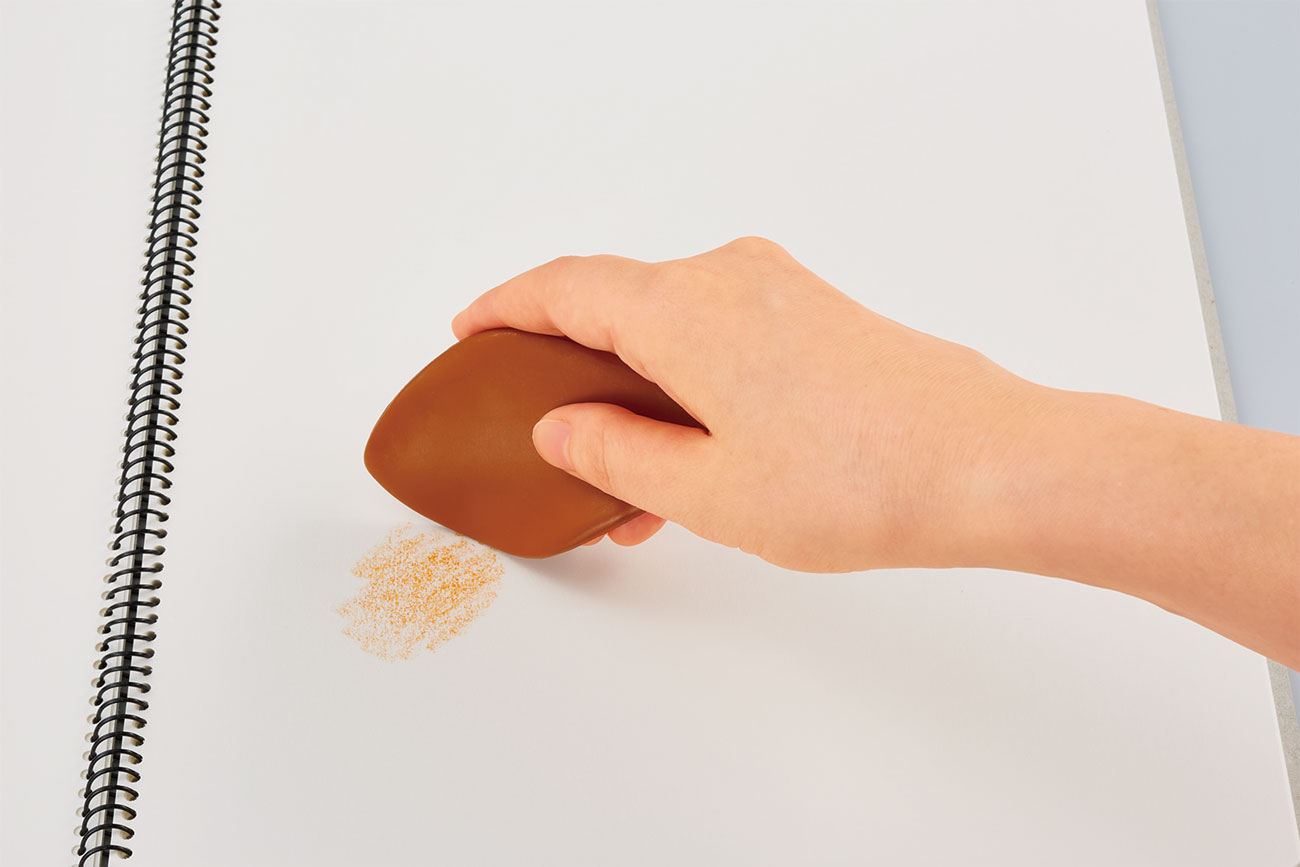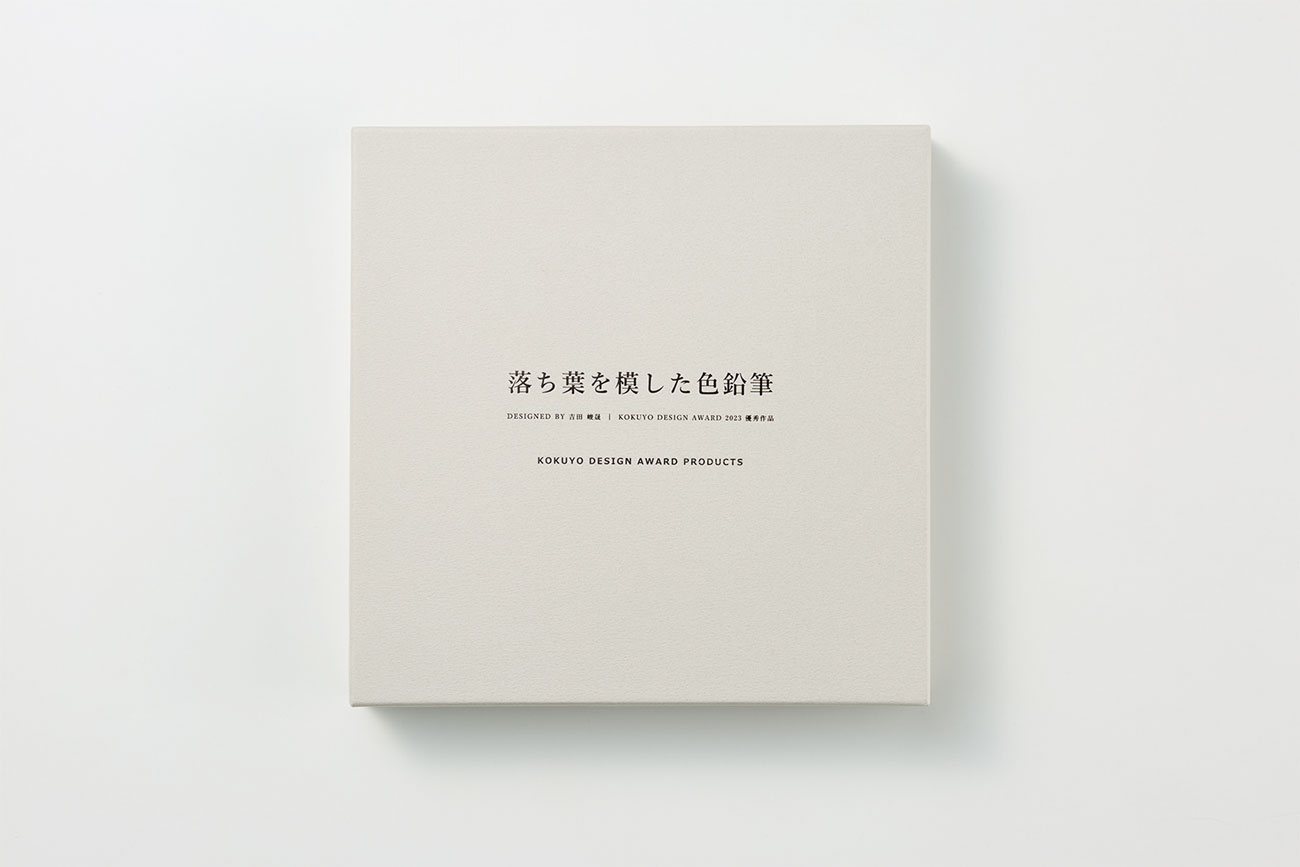FROM CONTEST TO MARKET
Fall Leaf Colored Pencils
〈2023 Merit Award〉
It is beautiful to be cluttered.
If you rethink things with such values, you will be able to see a world that is different from what you have seen before.
"Fall Leaf Colored Pencils" is a product that will open the doors to new values and create even more passions.
Introduction video about products:
https://youtu.be/qRY7ffHxUNs?feature (YouTube)
*Only available for purchase in Japan.
A certain incongruity with the translation of "embrace"
"Fall Leaf Colored Pencils" was selected for the Merit Award at the KOKUYO DESIGN AWARD in 2023. The artist is Shunsei Yoshida, who was a university student at the time. Mr. Yoshida became interested in crafting partly because the professor of the seminar he belonged to specialized in architecture. When applying, he started by looking at the meaning of the word "embrace," the theme for 2023, but as he dug deeper, he says that felt a sense of incongruity. "On one site, there was a translation of 'tolerate' and 'inclusion,' but I feel that these expressions have the meaning of 'compromise.' So, I wondered if it could be understood in Japanese with a different meaning." (Mr. Yoshida)

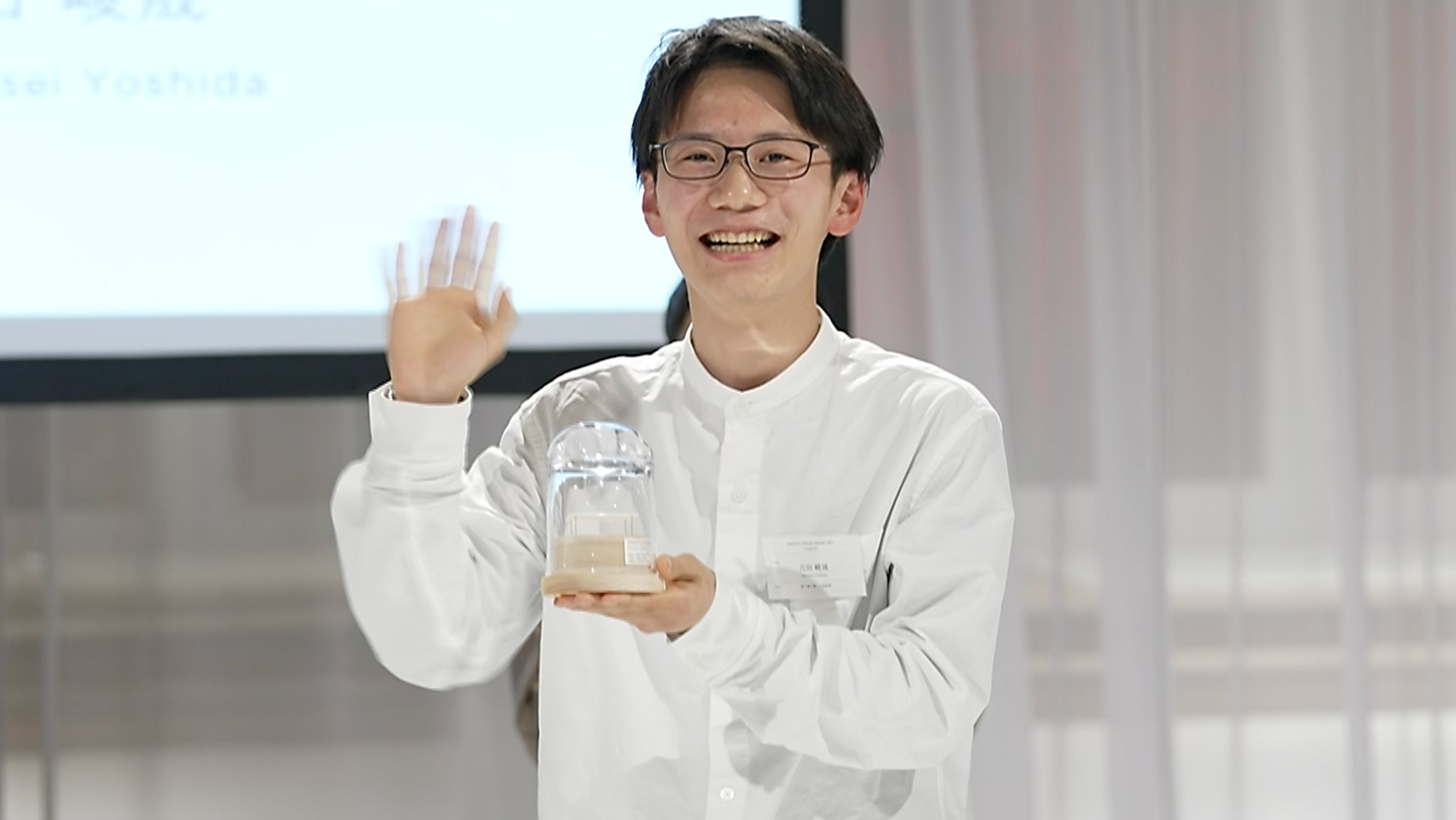
Left: Artist Shunsei Yoshida Right: Award Ceremony
The turning point was the experience of playing with Jenga. "Even if Jenga collapses, I don't think it's 'messy.' When I thought about why that was, I realized that even if it collapsed and scattered about, it was part of the product as Jenga," says Mr. Yoshida. Inspired by this, he did not think that fallen leaves were "messy," even if they fell to the ground, but thought that even the falling leaves were beautiful, so he created this work. He received high praise for his change of ideas and beauty of the visual, and won the KOKUYO DESIGN AWARD his first time entering.
Members with outstanding expertise gathered to start the project
When the project toward commercialization started, Masafumi Yoshikawa of KOKUYO was the first person to be approached. He is a member of the Development Department who is usually in charge of writing tools among stationery. Yoshikawa recalls, "When I was thinking about where to start, the first issues that came up were the shape of the leaves and the pigments that would be used as materials for the colored pencils."
It takes a lot of money to make molds for molding, so when he was worried about the cost, he happened to have a chance to talk with Masahiro Nakamura, who is a member of the Technology Development Center and is familiar with resin molding. "At that time within the company, I was researching whether it would be possible to make molds using resin materials faster and cheaper than conventional metal molds. I wondered if we could apply that technology," says Nakamura. This encounter was a breakthrough.
When it came to pigment composition, the second issue, Yoshikawa first thought to consult with KOKUYO MVP (hereinafter referred to as MVP). "MVP is the domestic production base for KOKUYO Stationery, and is responsible for the production of paper products, files, and crayons. We thought that we could use crayon technology to commercialize this product."
Yoshikawa immediately consulted MVP's Motoyuki Mihara, and creation of the prototype started. Thus, a project transcending the boundaries of the KOKUYO Group began.

(From left) Masafumi Yoshikawa (Product Development), Masahiro Nakamura (Technology Development), Masahiro Kawakami, Motoyuki Mihara (Production Planning)
Taking advantage of each strength
MVP's Masahiro Kawakami is in charge of composition. "Because of the delicate shape of the leaves, there were problems such as them breaking easily, so it was necessary to adjust the viscosity of the liquid so that when the melted material was poured into the mold, it did not clog, and air bubbles did not form," says Kawakami. In order to solve these problems, he worked hard to formulate pigments, waxes, and oils.
In the molding phase, Nakamura used molds made from resin materials. When pouring the pigment into the mold, he said that he repeated trial and error, making a spout on the back of the leaves and pouring it from the stem of the leaves. "The method of making a spout on the back of the leaves created a stiffness in that part, so it was necessary to remove it, but it inevitably left marks and affected the appearance and feel. In the end, I chose a method of pouring pigment through the leaf stem so as not to lose the beauty of the form of the work." (Yoshikawa)
Attention to beauty in every detail
You can catch a glimpse of their commitment to beauty in other places. For example, regarding the mold used this time, Nakamura says, "If the mold is made of resin, the surface will not finish beautifully, and if pigment is poured in in that state, the rough surface will be transferred to colored pencils as it is, which will affect the appearance. So we applied a special surface treatment to finish the surface as neatly as possible, and made the surface of the mold into a fine matte shape."
However, there were also issues created by making the mold into a matte shape. Mihara says, "In the process of removing molds that have cooled and solidified from the mold, new problems arose, such as sticking together and not peeling off well. However, we were able to overcome this problem by utilizing mold release agents while also learning about resin molding from Mr. Nakamura."
Yoshikawa and Nakamura both say, "We want people to pay attention to the beauty of the packaging."
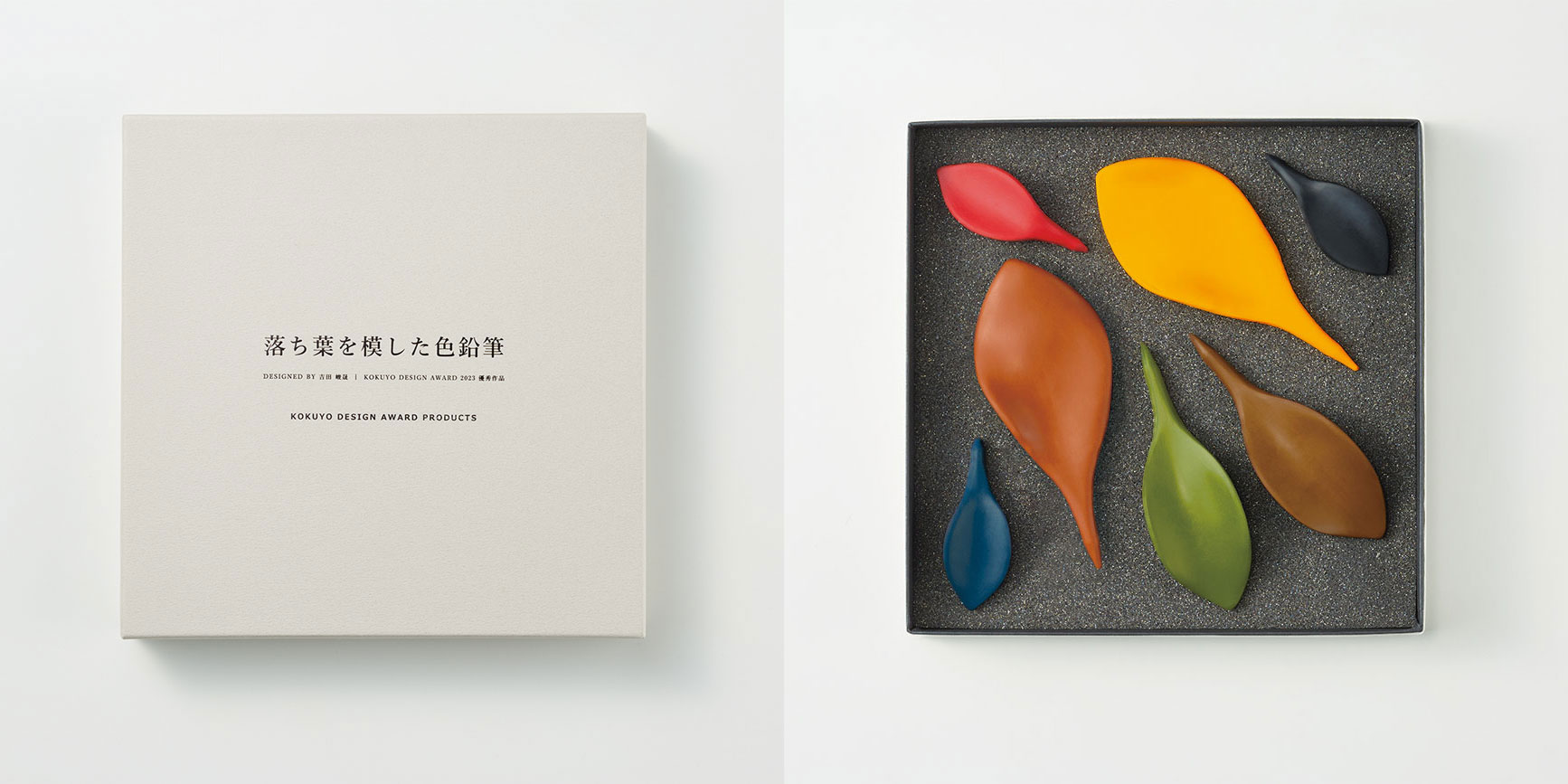
The Fall Leaf Colored Pencils package
"In order to embody the concept of 'remaining beautiful in a cluttered state,' we deliberately made it possible to arrange the package freely without fixing the storage place of the product. Instead, the product is gently sandwiched between the top and bottom sponges to prevent it from moving during transportation or carrying," and just as Yoshikawa says, the package is designed in a way that lets the user feel its beauty from the moment it is opened.
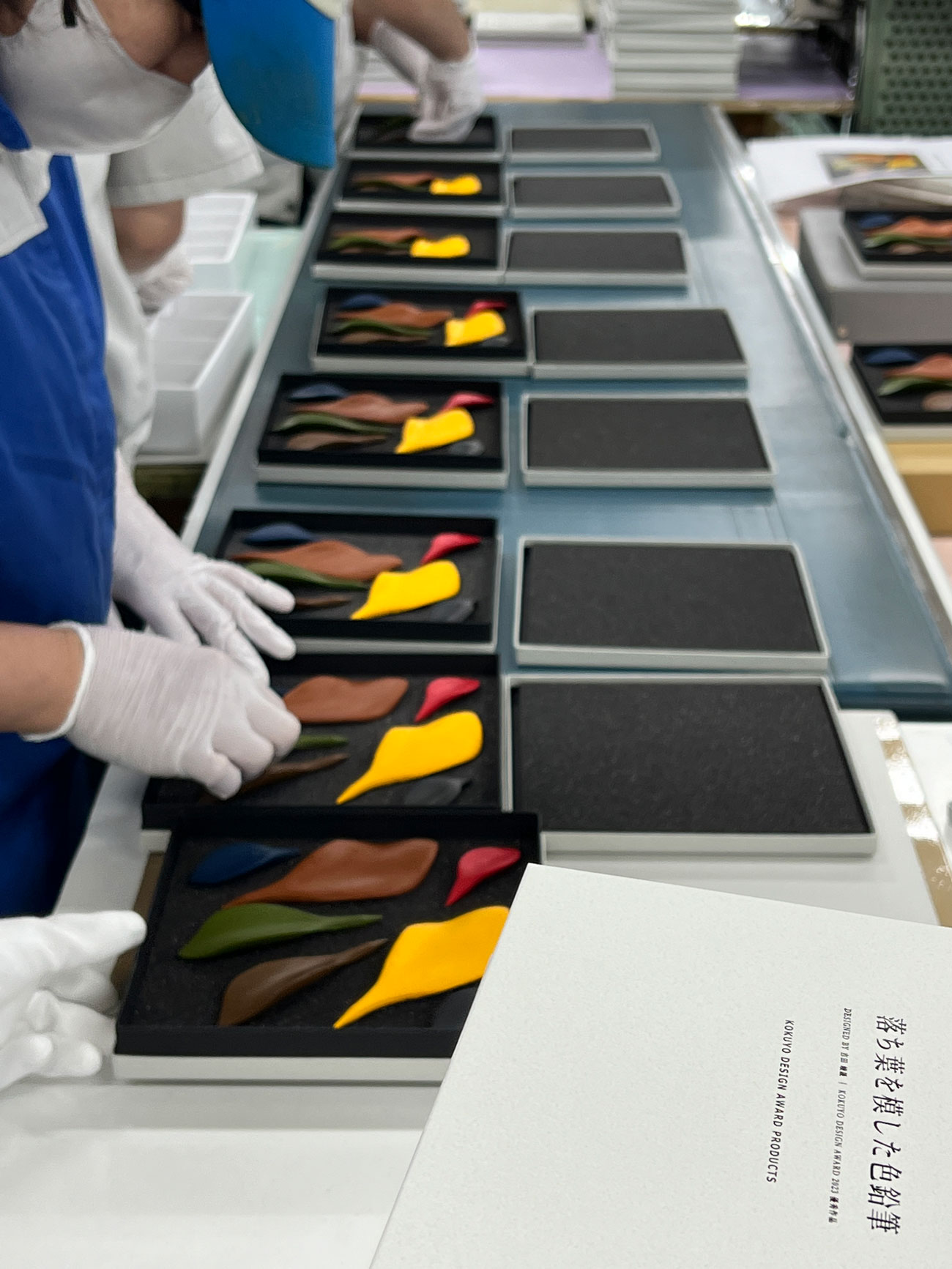
A picture of boxing in KOKUYO MVP, the production plant
Aiming to be a key presence that brings out passion
Finally, when we asked the KOKUYO members what was the most difficult part, all of them said, "Trying not to deviate from the original concept and design as much as possible. And valuing the feelings of the artist." This work is so charming that members who have developed and manufactured many stationery so far love it. The artist, Mr. Yoshida, said the following to those who are thinking of applying for the KOKUYO DESIGN AWARD. "Of course, I think it's important to have a desire to win an award, but more than that, I want you to work while thinking that creating is fun. If you think of this award as a 'good opportunity' and enjoy working toward it, it will naturally lead to the best results for you."
Mr. Yoshida and the KOKUYO members hope that "Fall Leaf Colored Pencils" will be the key to bringing out a new passion to those who pick it up.




















